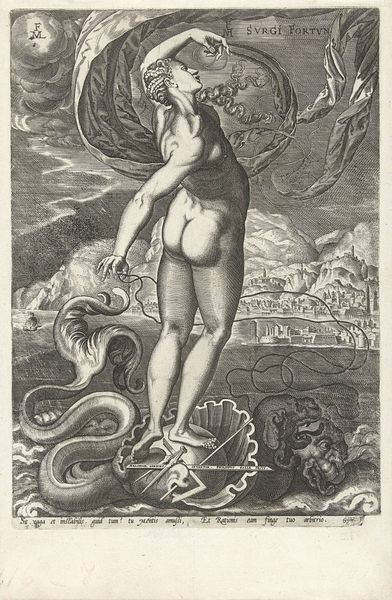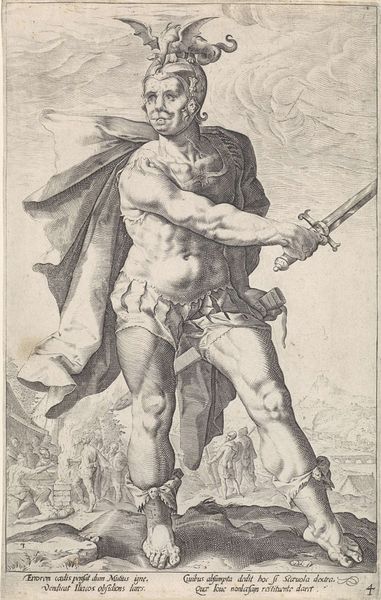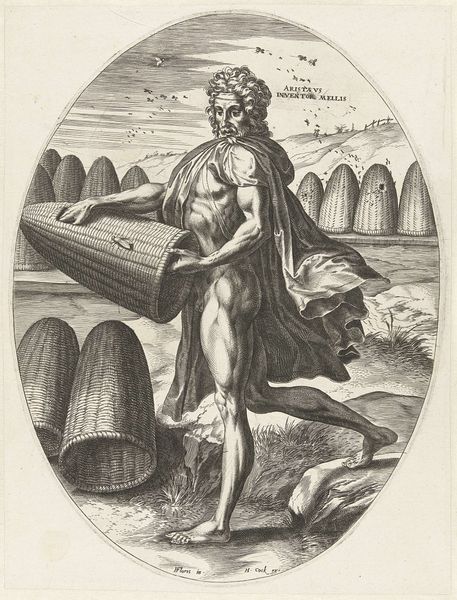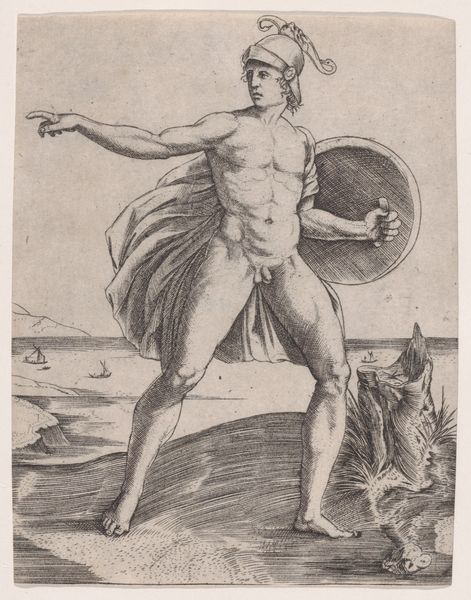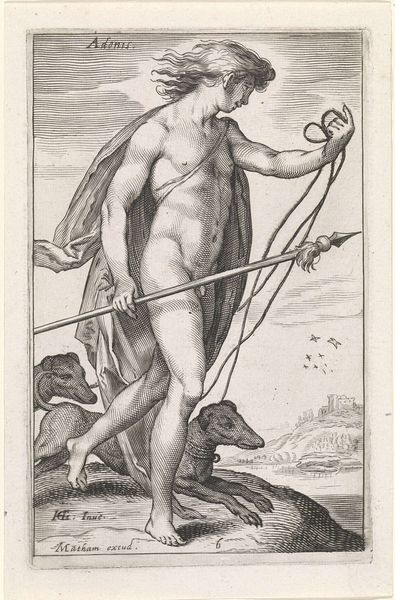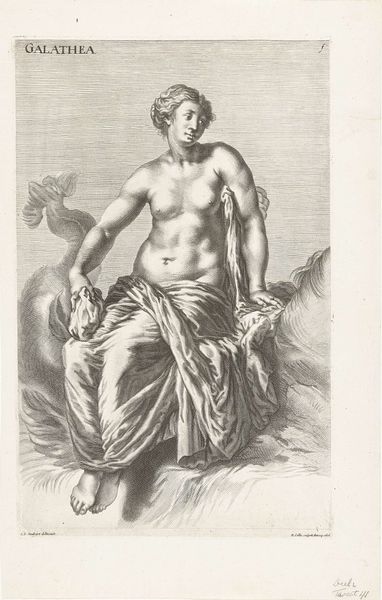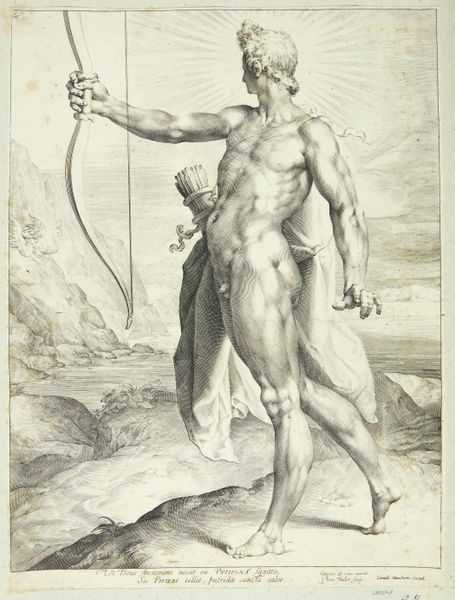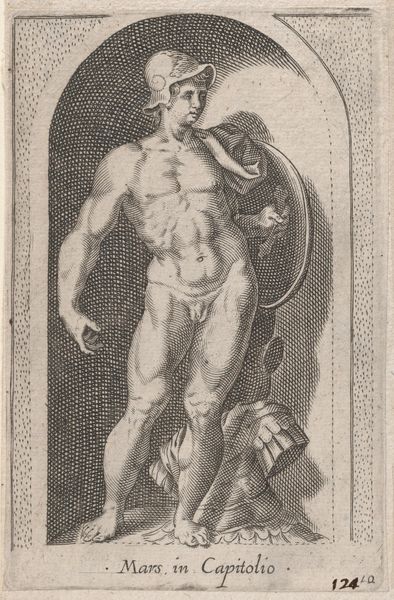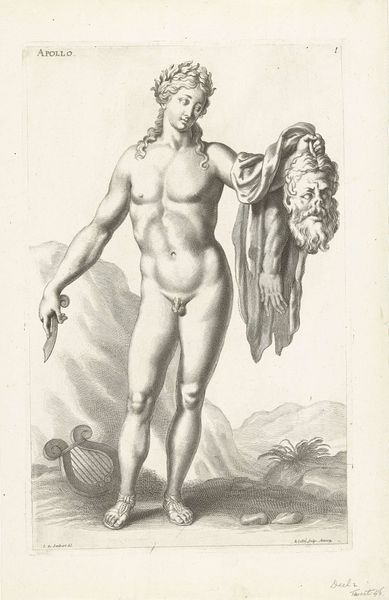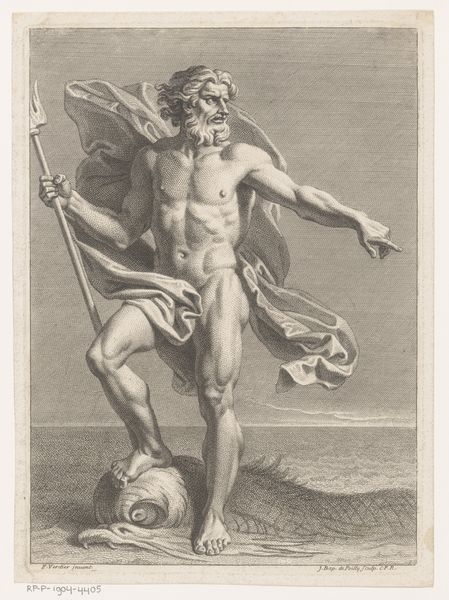
print, engraving
#
allegory
#
baroque
# print
#
landscape
#
classical-realism
#
figuration
#
history-painting
#
nude
#
engraving
Dimensions: height 340 mm, width 214 mm
Copyright: Rijks Museum: Open Domain
Curator: Welcome. We are standing before "Neptunus," an engraving by Willem van Swanenburgh, created sometime between 1603 and 1607. Editor: My first impression is of powerful serenity, even though he is surrounded by the rough sea, and I'm immediately drawn to the contrast between the smoothness of the god’s skin and the meticulously rendered texture of the water and cloak. Curator: Indeed. Swanenburgh's mastery lies in his ability to articulate form through line. Note how the density of the lines creates shadows and volume, especially in the drapery and musculature of Neptune. Observe the linear precision and economy with which the landscape is represented. Editor: It’s intriguing how Neptune, standing upon these almost cartoonish dolphins, still communicates such authority. Dolphins have long been associated with deities and royalty as guides. I wonder about this relationship and its psychological impact. There is also a kind of stoicism written on the face that I don't immediately associate with sea gods. Curator: I agree; these symbols enrich the meaning. Neptune, nude save for a billowing cloak, is equipped with the symbols of his authority—a trident and reigns of the sea. And if we consider the iconographic precedents in classical antiquity, the trident has more abstract structural echoes within the landscape depicted, providing cohesion to this piece. Editor: I think it also adds another layer. Neptune isn’t merely a nude figure, but a symbol of dominance, controlling these harnessed, eager dolphins. The dolphin being symbolic itself reinforces the multilayered visual vocabulary. Curator: A close examination also reveals Swanenburgh’s handling of light and shadow, which gives the scene a theatrical, almost Baroque feel. The way light reflects off Neptune's body emphasizes his ideal form, a reference to classical ideals of beauty. Editor: Absolutely, and those classical elements lend "Neptunus" its lasting symbolic weight. Curator: It exemplifies the enduring power of classicism as interpreted by the Baroque aesthetic. Editor: In its totality, Swanenburgh encourages the viewer to engage with enduring motifs of power, dominion, and man’s relationship with the natural world.
Comments
No comments
Be the first to comment and join the conversation on the ultimate creative platform.


